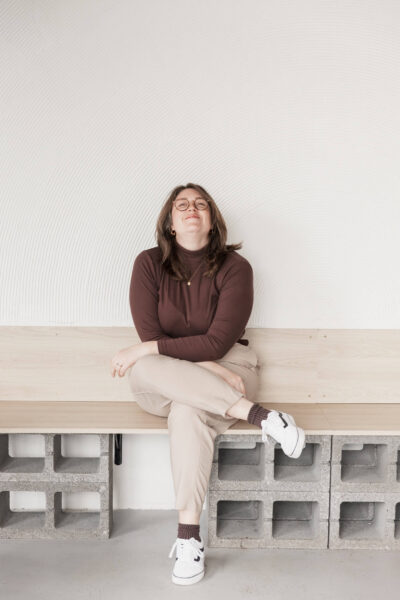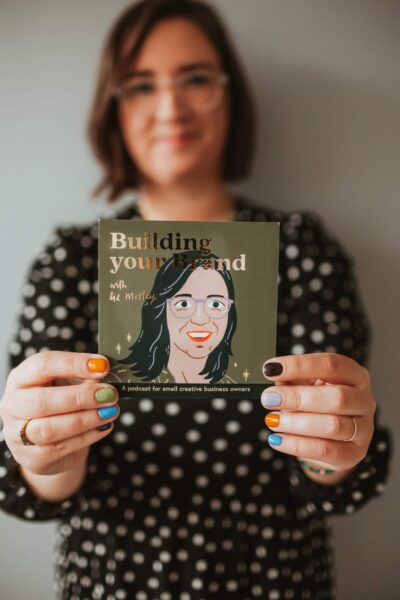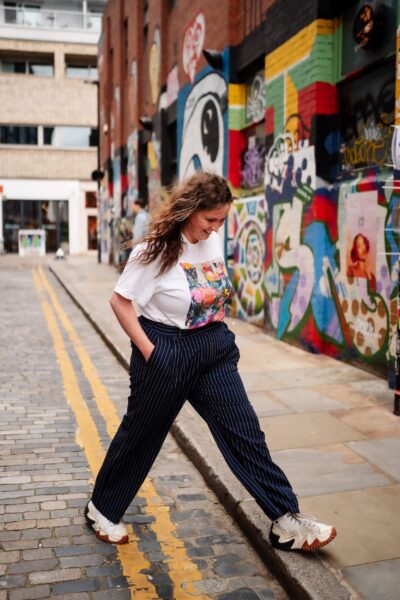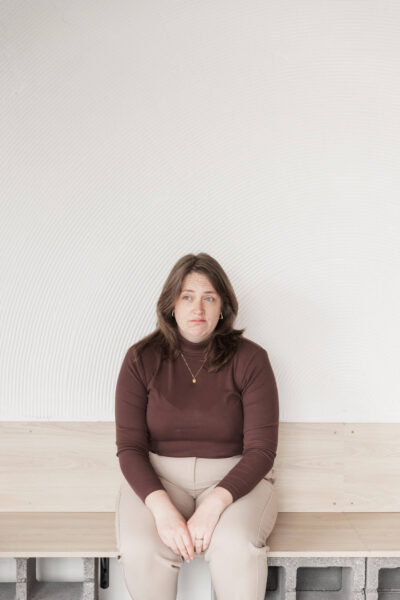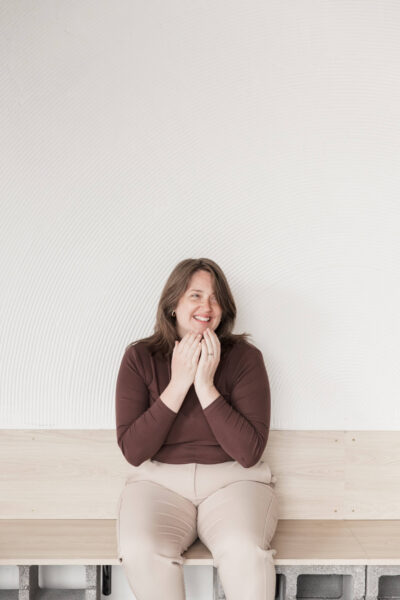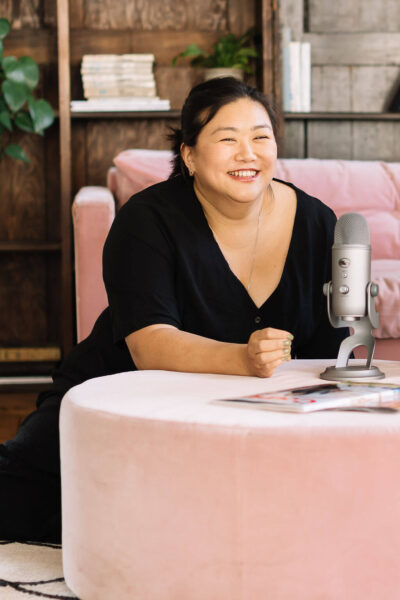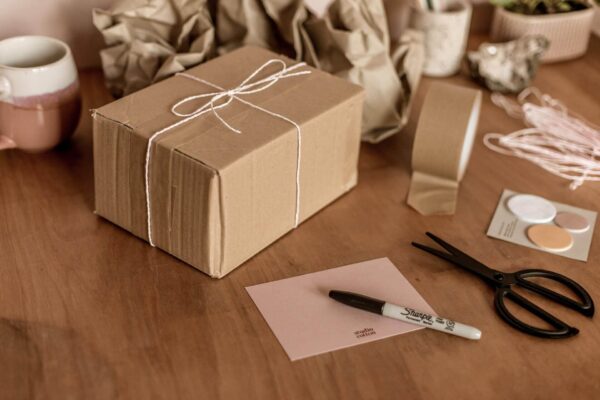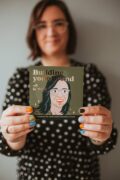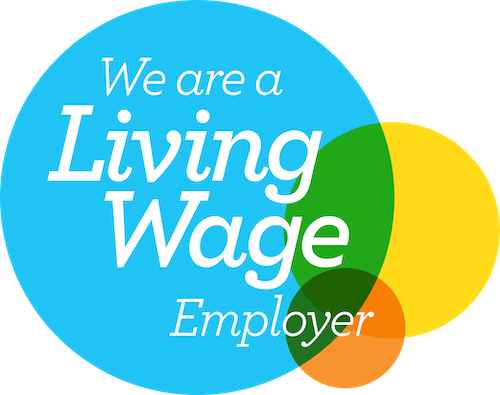Lovely Studio Cotton founder Aime Cox asked me to write this blog article because we realised we just don’t have enough dang content around conversion rates. She told me all her expert knowledge, and I’m writing it down for you guys – now that’s teamwork.
We’ll be following this blog post up with another about why your service business isn’t getting many inquiries, but we thought it’s better to split them, because there are some reasons that only apply to online shops.
Conversion rate is the percentage of visitors that turn into a successful order; a successful checkout. In the UK, as a ballpark, we’d expect a healthy conversion rate to be about 2-2.5%. That means 2-2.5 out of every 100 website visitors places an order.
There are tonnes of reasons why a conversion rate might be higher than this. For example, small businesses actually tend to have a higher conversion rate, we put this down to them having a smaller audience, but that audience tends to be more engaged, especially if it’s an established brand.
Equally, there are lots of reasons why an online shop has a ‘bad’ or low conversion rate, which is why we are writing this article right here.
Some of them are reasons to worry about or reasons to take action to address, but there are loads of legit practical reasons why an online shop might have a bad conversion rate that are just things to bear in mind when looking at your stats, rather than anything that actually needs addressing.
Ok, let me stop waffling and get stuck into the reasons why your online shop might have a bad conversion rate.
1. Your website has poor user experience (UX)
We lay out our websites to give us the best possible chance of someone finding a product (or multiple products) to solve their problems, and getting to the checkout, for example, how we lay our menus out, the information we include on our product pages, how we structure the content to put important things at the top of the page and less important things at the bottom of the page, and so on.
UX is a weird acronym for User eXperience, and Aime explained what it is really well in this Instagram post.
Instead of it being about how beautiful your website is, or how much you spoil and indulge your customers, when we talk about web design UX, it’s all about making sure that we are optimising our websites to give us the best possible chance of our visitors doing what we want them to do – which for an online shop is to get that conversion; to get them through the checkout.
There are a bunch of ways to improve UX, and a lot of it is to do with implementing Best Practise. For more context, when we talk about Best Practice in design and tech, we’re talking about following rules, processes or standards that are the most likely to have a positive outcome based on historic data, research, and analysis.
And coincidentally, Aime’s dad literally wrote a book on it. Ok, that’s not related to this article – but Aime made me drop it in.
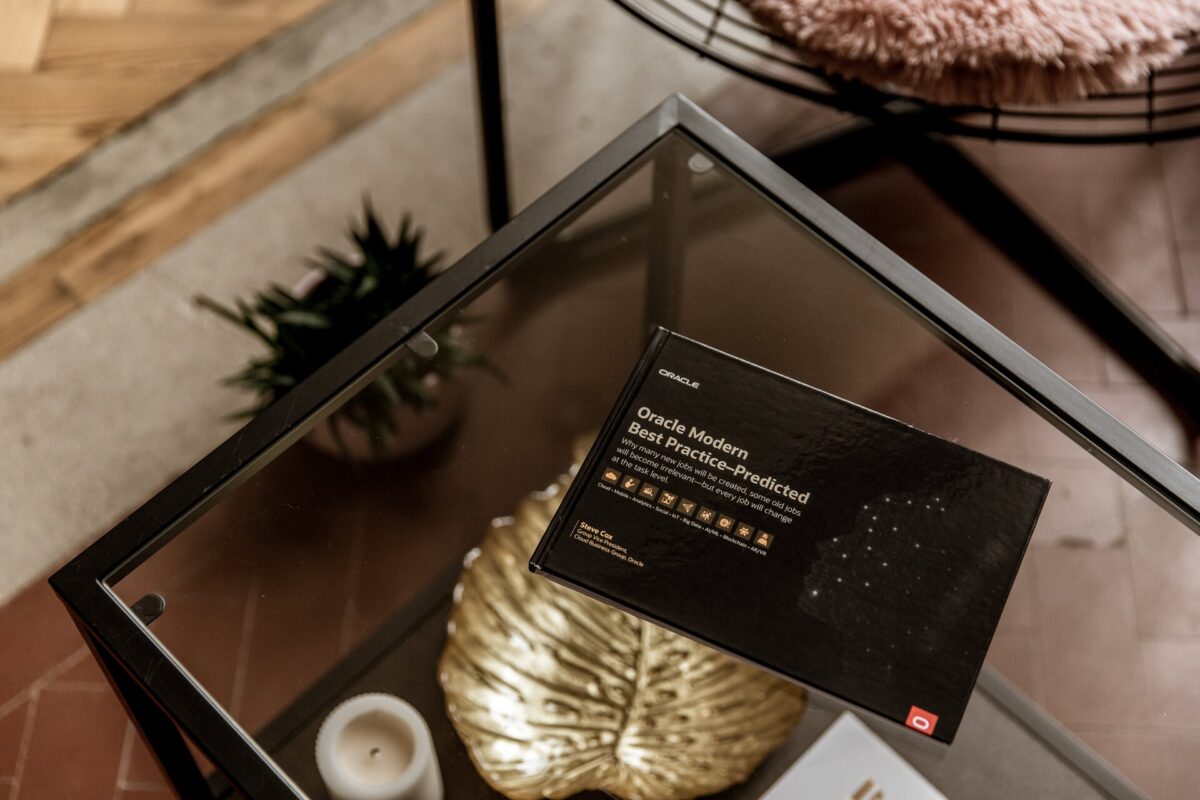
For example, it is UX Best Practice to pop your main menu at the top of your website as there’s where your audience knows to look. That’s why we would say that popping your menu in the bottom right hand corner would be bad UX.
There are tonnes Best Practices that we can implement to optimise our user journey, to optimise our UX, and to get someone from wherever they land to the conversion point.
We can also complement these practices with logical decisions – for example – there might not be a Best Practice for where to pop the event location on your workshop listing, but we can safely say that this info should be pretty darn prominent as it’s essential to the customer.
If you have poor UX – if you have distractions, if you have missing information – that can result in a bad conversion rate. And usually, if you do have a particularly poor conversion rate, it is down to your non-optimal user experience.
2. You don’t have many products in your online shop
A really logical reason why a lot of online shops have a bad conversion rate is down to not having a high quantity of products in stock.
For example, if you’re a small-batch ceramicist and someone really likes your bowls, but all your bowls are out out of stock, there aren’t any items to solve their bowl need.
Having a limited product catalogue can result in having a low conversion rate, simply because there aren’t as many alternatives when a product isn’t in stock, or a product isn’t the one that your customer has fallen in love with.
This is one to consider when looking at your stats, but not really one to worry about – small business and makers tend to have smaller product catalogues.

3. Your products have a high price point or are a considered purchase
Many people don’t have to worry about spending £15 on a new hat or £5 on a fancy scrunchie, but if you’re selling something at a high price point – like a £500 handbag, or a cabinet that’s £1,000 – it’s not something that people tend to buy without putting thought into it, which can also sometimes mean multiple visits to your website.
If they visit your websites five times and make a purchase at the end, that’s going to reduce your conversion rate, because they had multiple visits to make one purchase, as opposed to that £5 scrunchie-maker who sold a scrunchie from one visit.
It’s another reason why if your products generally have a high price point, and/or they are the kind of product where someone wants to keep coming back to it (like a washing machine, which needs some consideration time) then that would inevitably result in a lower conversion rate.
With higher-priced items in your shop, you also won’t get the benefit of impulse buyers.

4. Your website has low organic traffic or a lack of SEO
SEO (search engine optimisation) is the process of optimising websites to make sure they are attracting as much traffic from Google searches (also called organic traffic) as possible.
We get visits to our website through multiple different channels, and they each have different conversion rates.
Traffic from Google searches tends to be amongst the highest converting. In our experience, we find that in converts at about 1-1.5 percentage points higher than a website’s average, so if your conversion rate is 2.5%, it’s not unusual for your organic traffic conversion rate to be 3.5%-4%.
It might not seem like a huge jump, but it’s nearly double the number of orders from every 100 website visitors – which is ruddy brilliant.
If your website isn’t getting traffic from SEO, you don’t have that really high-converting traffic that would pull up your average conversion rate. On a healthy, optimised website which isn’t running ads, about half of all of your traffic will come from organic Google searches.
If you don’t have that huge half of traffic that is converting at 3.5%, then it will make your overall site conversion rate look a lot lower.
This is one that can be fixed by just actively working on your SEO – we’ve got lots of helpful posts about SEO on our blog.
5. Your product descriptions are bad and/or too short
This is also related to your website’s SEO: when you have an online shop, a lot of small business owners get tunnel-vision by optimising just their home page for their SEO, but actually the highest quantity of content that impacts you website’s SEO actually comes from your product pages.
Look at it like this – if you have an online shop with 99 products, you will have 99 pages that are products and only one home page. 99% of your pages would products, so if you want to majorly improve your SEO, this is where you should spend your time.
It’s really difficult for a small business’ products to rank well in Google without thorough product descriptions.
Generally when you’re an online shop, the big three things that are gonna show up in Google search results are your home page for site-wide searches, your different collections or categories, or your products.
So obviously, if you have 100 pages on your website that are not thoroughly optimised, they won’t show up in Google search results and you won’t get that yummy SEO traffic, which will then reduce your conversion rate.
If you’re struggling to write your product descriptions, guess what? We have a blog to help you – 9 enticing details of a really, really good product description.
And if you’re still finding it too difficult after reading that, we have an SEO product descriptions package, taking that task off your plate completely.
6. You have no creative product collections in your online shop
Those product collections that match different search terms give you more opportunities again to show up in Google search results, which can bring in some of that juicy high-converting SEO traffic we mentioned.
You probably don’t sell a product called ‘Gifts for Teens’, but I bet you could create a collection. You might not have a product that sums up Cosy Autumn Decor all by itself, but I bet you could create a bangin’ cosy collection.
Different platforms use different terms – Shopify uses the term “collection” for its categories, whereas WordPress and Squarespace both tend to use “categories”.
Here, when we’re talking about “collections”, we’re just talking about groups of products, not the technical collections that Shopify uses. This is where you match your group of products to things that people will be searching for.
You see this a lot around Christmas, with different Christmas gifting collections – gifts for teens or gifts for gardeners – as well as for different times of year, like Valentine’s Day favourites or indulgent Easter treats.
It’s really a good idea to be creative with how you group your products, as long as it’s relevant to what you sell. Make sure you’re only creating collections that you actually have products for, like a good selection of products that would be gifts for gardeners or a good selection that would be gifts for teens.
You can go crazy and add a bunch of really specific collections, especially on the run up to Christmas – go wild.
7. You don’t do any email marketing for your small business
We talked about how SEO organic traffic has a high conversion rate, and the only one that ever tends to beat it is email marketing. For our clients, email marketing has a conversion rate of around 1.5-2 percentage points higher than their website average, so if their website conversion rate is 2.5%, their email conversion rate could be up to 4.5%.
Although we don’t always stay on top of it ourselves, we always rave about how important email marketing is, because it’s so blimmin’ effective. Don’t worry about penning long emails, shorter messages work better, with a big ol’ simple call-to-action button like “shop now”.
This another one where if you don’t have that really high-converting email traffic, your whole website will look like it has a lower conversion rate over all.

8. You have a huge social media following
We’ve talked about how your conversion rate can appear lower if you do not have high-converting traffic, and, well, social media traffic actually tends to be quite low-converting.
It’s not unusual for traffic from Instagram, for example, to convert at a percentile lower than your website conversion rate. So if your website conversion rate is 2%, social media might convert at only 1%.
If you have a huge social media following, you tend to have a higher-than-average proportion of that social media traffic with that low conversion rate, which can then drag the overall conversion rate of your website down.
Again, it’s not something to worry about or look into changing. Rather than it being an issue with your website not performing, you’ve just got an extra burst of visitors who aren’t gonna shop just yet, which is still dandy.
9. Your website also has a popular blog or podcast
There are multiple reasons why someone might visit your website if you have an online shop, and of course most people visiting your website will be there to go shopping.
But, if you also have a popular blog or you have a bank of podcast episodes on your website, then you’ll have many users who are visiting your website to read your articles or to see what your latest episode is, and they are not there to shop.
These people were never gonna convert during that visit to your website to read a blog or to listen to a podcast, which is which is a-ok – there’s a whole separate reason why you’re attracting users to your website for blog content or warming them up with podcast episodes.
Yeah, it might look like you have a lower conversion rate, but there’s a cool thing in GA3 and other old versions of Google Analytics that can separate this traffic.
When we’ve client websites that also had popular blogs or popular podcasts, I would create filters in Google Analytics to filter out the traffic from people who visited multiple blog posts, which would then leave the rest of the traffic so I could see what the conversion rate was like. Ta-da!
Hopefully that’s been a super helpful look into conversion rates, where yours should sit, and why it might not be quite as high as you’d hoped. Perhaps you’ve even got a nice lil to-do list written too, because what is life without writing a list, and the satisfying moment you get to tick something off?
We’ve got a bunch more posts especially for ecommerce businesses on the Studio Cotton blog, as well as an absolute tonne of tips over on Instagram too.


